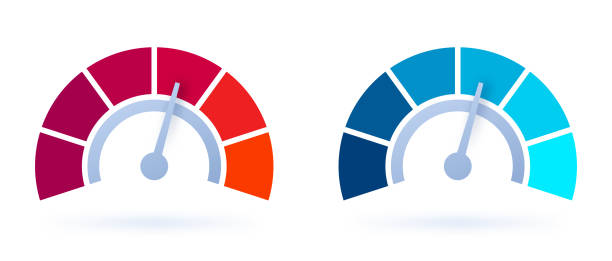
There is no doubt how COVID-19 affected the majority of business sectors globally. Unfortunately, some businesses in different parts of the world had to shut down for good. But with the availability of vaccines and the number of infections slowly declining, the world has started to get back on its feet cautiously.
There is still a tinge of uncertainty about the pandemic’s progression and whether we are can fully go back to our pre-pandemic routines. As such, getting your businesses back on track may not be a walk in the park.
Yet despite these restrictions, many enterprises have overcome and adapted to the uncertainty of times and, more importantly, experienced growth in the middle of a pandemic. Case in point: e-commerce.
This might be the right time to scale your e-commerce and aggressively work on its growth moving forward. Many consumers find that e-commerce is more convenient because it involves no physical stores but allows them to shop in the comfort of their homes. Not to mention, you as an e-commerce business owner have a golden opportunity to bypass post-COVID reopening struggles, such as complying with health and safety regulations.
How e-commerce changed the business world
2020 will forever be engraved in our minds due to COVID-19. It has significantly changed the business sector and consumer buying behavior. A majority of consumers changed their shopping habits to cope with the pandemic. Work-from-home also became the norm.
Thankfully, the restrictions are starting to ease, and most businesses and schools have begun reopening their doors. We are now in the so-called “post-COVID era,” which means the health situation is more manageable.
If there’s a silver lining to the pandemic, it is how e-commerce businesses boomed. Today, it seems that e-commerce trends and updates continue to dominate the business world and will be here to stay.
Here are the top trends in e-commerce.
Online shopping
Nowadays, innumerable businesses worldwide have an online presence. For example, online grocery shopping services have been added to the mix. Big and small companies alike have joined the bandwagon and grown their online grocery business.
Other product categories showing significant sales growth during the pandemic are fitness products and household equipment and furnishings. However, online fitness services may slow down a bit, as gyms and sports centers re-open to the public.
Shopping on social media
Social media platforms also took advantage of the higher online retail demand during the pandemic. They now include features that allow users to browse and purchase products from online retailers without leaving the platform.
These social media platforms are integrated with popular e-commerce platforms for easier and more optimized omnichannel promotions. Such features are found to be effective in increasing retailer sales.
Flexible fulfillment options
While shoppers shifted to online shopping, others businesses opted to offer fulfillment options for their customers. Now, customers can either pick up their purchases or deliver them from physical stores.
Third-party delivery service providers partnered with businesses to fulfill customers’ orders. Contactless payments also became more prevalent in 2020.
Challenges of reopening e-commerce in the post-COVID-19 era
E-commerce has indeed helped the economy grow despite the ongoing pandemic. Even if we are not completely free of the dreaded virus, businesses still have the opportunity to thrive thanks to e-commerce.
However, it is best to know the possible implications of reopening your business (or have a useful guide to e-commerce success if you are planning to operate online) amid the looming uncertainties of the pandemic.
There are major areas to look into.
Cash flow
Among businesses, small enterprises are most unlikely to reopen post-COVID. The reason? Lack of capital or cash flow. Most businesses that had to pause operations could not maintain revenue but still had to pay expenses like office rental and utilities.
Even if your business is fortunate enough to reopen, the environment may not be the same from pre-pandemic days. For one, you must reconfigure your office space to comply with physical distancing and other relevant health measures imposed by government agencies.
Customer base
While e-commerce has existed for the longest time, the pandemic further caused the popularity of this business model. For safety reasons and health compliance, many companies shifted online to keep their businesses afloat.
With consumers’ fascination with everything online, especially among the younger generation, the popularity of e-commerce won’t seem to wane anytime soon – even after the pandemic.
Changes in the workforce
Because many businesses nowadays turn to e-commerce, it also means significant changes in the workforce. This could lead to reshuffling or downsizing to accommodate the new changes. Shifting to automated work is also one thing that should be considered. Here, there must be proper communication before, during, and after the business transition between the company management and staff.
Ensuring health and safety
Everyone’s health and safety remain crucial since the pandemic is not yet over. Physical distancing and regular disinfection will have to be implemented. Although this may be an extra step in your business’s daily operations, it is necessary to protect your customers, employees, and business.
Uncertainty of times
While COVID restrictions are slowly easing down, no one knows when the pandemic will end for good. There is also no assurance if there will be no lockdowns or restrictions anymore or sudden spikes in the cases in the next coming months. This means business stability is not guaranteed for both the short and long term.
There will be fluctuations in supply and demand, depending on the current COVID situation in the area. You could also expect delays in shipments. There could also be disruptions to business continuity, all of these due to the pandemic’s unpredictability.
Reopening your business safely amid a pandemic
While many companies have started to reopen their stores, it could also mean that they are about to welcome a retail environment way different from what they were used to pre-COVID days. Retail spending may significantly decrease, while e-commerce will continue to thrive even after the pandemic leaves us for good.
The next few months or years can be challenging, especially for consumer goods and retail industries. That is why creating a comprehensive business reopening plan is crucial during this time.
Is e-commerce the best strategy for business reopening post-COVID, or should you have both physical and online stores? Well, it depends on several factors, including the nature of your business, target market, and financial resources, to mention a few. Nonetheless, both options can be beneficial for future growth.
Consider the following before reopening your business:
- Conduct an assessment for contactless, omnichannel, and e-commerce business model options.
- Create a strategy to gain new clients and retain current ones. Use social media to promote your business and other promotions such as discounts, free trials, freebies, etc.
- Assess your financial standing, including operational costs, pricing, and cash flow. For physical stores, decide whether to operate them on limited store hours to control overhead expenses.
- Evaluate health, legal, and safety measures if you plan to reopen a physical store. Follow safety and health protocols.
- Plan for inventory and purchasing item stock. Also, check if you can still work with your previous suppliers or vendors, or it is time to look for new ones.
- Ensure that everyone in your team or organization is aligned with one goal, which is to grow the business despite the looming uncertainties of the ongoing pandemic.
The future of e-commerce in the new normal
Times are still uncertain, and that’s no thanks to COVID-19. We never know when the next lockdowns will happen or whether the cases will spike again in the next months or years. So far, one thing is for sure: online shopping and omnichannel businesses will continue to grow and thrive even after the pandemic ceases to exist once and for all.
However, there will still be challenges that can affect the business sector. This includes possible port lockdowns if ever cases rise again due to COVID-19. Port congestions may also happen due to the fluctuating demand in orders. These are just some of the potential drawbacks you need to anticipate and prepare for.
Then again, e-commerce will continue to grow worldwide despite the foot traffic also rising and returning to normal in the next few months. Consumers won’t choose between shopping online or in a brick-and-mortar store. Rather, it’s a matter of considering crucial factors such as lower prices and product accessibility. Ideally, you must have your products available online as well as in physical stores to cater to more shoppers.
No doubt, COVID-19 took everyone by surprise. As a retailer, it pays to know how to run the business by considering unforeseen circumstances, such as a global pandemic. Companies that can adapt to the changes will survive and even thrive.
Everyone yearns to return to what it was used to be. However, this kind of thinking can be detrimental to the business. Whether we like it, we now live in the “new normal.” But this doesn’t mean there is no more hope to recover and achieve growth after COVID. With the right mindset and strategy, you can help keep the economy running and bring money into your business.



